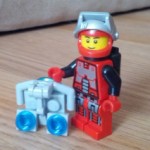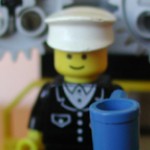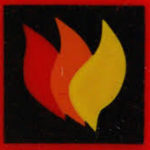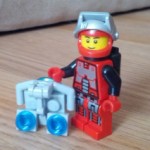Home › Forums › All Things LEGO! › Mils Questions
- This topic has 5 replies, 5 voices, and was last updated 1 year, 5 months ago by
 Dan.
Dan.
-
AuthorPosts
-
October 25, 2022 at 4:21 pm #47435
 MacParticipant
MacParticipantHello all,
I am relatively new to AFOL. But I am starting to work on some MILS plates. I had a couple questions.
1. Why is the 4×4 plates used on the top rather than something larger like 6×6 or 8×8? Is there some cost reason, or building reason? I was playing around with building a MILS with the random plates I had just to get a feel for the design and notices that mine had some bow in it when I was done. Perhaps using the 4x4s help with this aspect?
2. How do you do a 90 degree train curve when the radius is 40 studs and the standard MILS plate is 32? I saw a video about pinning the track an they were using a 48×48 plate, which seemed to work fine. But what is the best way to do this with a 32×32 MILS plate?
Any advice is appreciated,
JoshOctober 25, 2022 at 6:36 pm #47443 Benjamin C GoodParticipant
Benjamin C GoodParticipant>> 1. Why is the 4×4 plates used on the top rather than something larger like 6×6 or 8×8?
What’s your reference for this? I vaguely remember an old site that had something like that as a sample piece. You should treat it as just that, an old sample piece. There’s no rule that you have to do it that way. You can landscape however you want, and you can support that landscape however you want.
>> But what is the best way to do this with a 32×32 MILS plate?
It’s gonna cover more than one plate. There used to be PennLUG instructions for it, but I can’t find them anymore. I don’t know if we’re using their design or not. The person to ask would be Phil, who’s been in charge of the MILS project for the LUG, I’m not sure I know his userid here though.
October 25, 2022 at 6:56 pm #47445 Phil BrenemanParticipant
Phil BrenemanParticipantJosh,
I used the instructions at l-guage.org for my personal track. Instructions 005 use a 32×32 in the corner and a 16×32 on either side. It ends up 48×48 with a 16×16 cutout. You might be able to see what they look like in pictures from the fall trolley event.
As far as plates, I used 4×8. I agree with Ben that it really doesn’t matter. The stiffness of the structure will come from the layout of bricks between the baseplate and the plates.
Another person to ask is Will (@willmcdine). He has been doing some work on his track as well and may have made some different decisions than I did.
Phil
October 25, 2022 at 7:13 pm #47449 Will McDineParticipant
Will McDineParticipantI also use the same L Gauge website as Phil. The biggest difference is that my train track is not sitting ontop of a MILs plate, it is sitting ontop of a baseplate with a single layer of Green plate on top to make it look like grass. I will have a display and example of this system at Brickfest LIVE this weekend. If you are planning on coming for one or both of the days you can have a look for yourself and I can answer any questions you may have
October 26, 2022 at 10:14 am #47461 MacParticipant
MacParticipant@bengood921 Thanks for the information. I was just looking online and saw several examples using the 4×4 plates on top. Here is one example from brick train depot.
https://www.bricktraindepot.com/wp-content/uploads/2020/02/Cams-Brick-MILS-BTM-Green.pdfI was just curious is there was an advantage of using lots of smaller plates on top, rather than fewer larger plates. I could see it giving you more control over your design perhaps, or maybe there was a cost savings. I was also thinking it might help with the plates being flatter since it would allow a little more movement between plates.
But it is good to know I can use whatever I want.
@pnbrenem and @willmcdine Thanks for pointing me to the instruction 5 on L-gauge’s site. I had seen the site, but not dug into their instructions yet. I like your idea of just using the baseplate without MILS. I might start there and then slowly upgrade to MILS. I have some baseplates and could get my tracks set up on that. Maybe I will wait until the LUGBULK parts to start converting to MILS.Sadly I dont think I can make Brickfest Live. But perhaps you can post a couple photos.
Thank you all,
joshOctober 31, 2022 at 5:48 am #47584 DanParticipant
DanParticipantI’d wager 4×4 plates were used because it’s easy to buy a single part in bulk (via LUG Bulk, for example) and the 4×4 size provides a good balance between coverage and the ability to create slopes.
-
AuthorPosts
- You must be logged in to reply to this topic.
